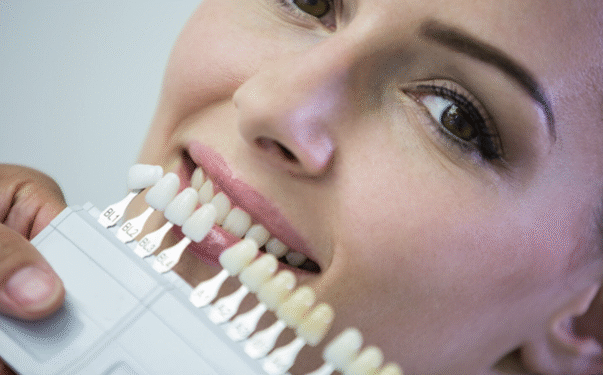Composite bonding has become one of the most requested cosmetic dental treatments in London for people who want a fast and natural improvement without committing to permanent alterations. This technique appeals to a wide range of patients, from busy professionals in the city to students and retirees who simply want to feel more confident about their teeth. It offers the combination of speed, minimal invasiveness, and artistry that suits the pace and style of life in the capital.
Understanding What Composite Bonding Is
Composite bonding is a cosmetic dental procedure that uses a tooth-coloured resin applied directly to the teeth. The dentist sculpts this resin by hand to improve shape, length, or surface texture and then cures it with a special light that hardens it instantly. The colour of the resin is chosen to match the natural shade of the patient’s teeth so that the final result blends seamlessly. The treatment does not involve removing healthy enamel, and in most cases, it does not require an injection or drilling. This makes it a far gentler approach compared to veneers or crowns.
Why It Has Gained Popularity in London
According to the British Society of Periodontology, more than %45 of adults in the UK are affected by some form of gum disease, and even mild cases can impact quality of life. While composite bonding is cosmetic by nature, improving dental shape and alignment often makes teeth easier to clean, which can indirectly help support gum health. London is home to some of the most competitive dental markets in the UK, and patients here tend to expect high standards as well as subtle, natural results. Composite bonding fits these expectations well. It can be completed in a single appointment, often taking less than two hours, which is ideal for those who cannot take much time away from work or studies. It is also a reversible treatment, meaning adjustments can be made in the future without any permanent change to the tooth.
Another factor is the aesthetic preference in the city. Many patients do not want an obvious “cosmetic dentistry” look. They prefer small improvements that refresh their appearance while still looking authentic. Composite bonding allows this because the dentist can address very specific concerns, such as a single chipped tooth or slightly uneven edges, without altering the rest of the smile.
Common Concerns That Bonding Can Address
Dentists in London often recommend composite bonding for:
- Repairing chips or cracks
- Closing small gaps between teeth
- Improving the shape or proportion of individual teeth
- Evening out edges to create a balanced look
- Masking discolouration that whitening treatments cannot remove
- Minor corrections to alignment without orthodontics
Because the procedure is so versatile, it can be used as a stand-alone treatment or combined with other options such as teeth whitening for a more complete smile refresh.
Factors That Influence Treatment Cost
While this guide avoids quoting specific prices, it is useful to understand what makes one case more expensive than another. The number of teeth being treated is the most obvious factor, but the amount of reshaping required also plays a role. Some cases involve only surface refinements, while others require more detailed sculpting. The experience and skill of the dentist are also significant since composite bonding is as much an art form as it is a dental procedure. Finally, clinic location can make a difference, with central London practices often having higher running costs than those in outer boroughs.
Durability and Longevity
When properly cared for, composite bonding can last between five and seven years, and sometimes longer. Like natural teeth, the bonded resin can pick up stains over time, especially if the patient regularly consumes coffee, tea, red wine, or tobacco. Regular polishing during dental check-ups helps maintain the appearance. Bonding can chip if subjected to habits such as nail-biting or chewing hard objects, but unlike some other cosmetic treatments, it can be repaired without needing a complete replacement.
A national dental health survey in the UK showed that %42 of adults have some form of gum disease, a figure that experts believe could rise significantly without better access to care and prevention. Although composite bonding is primarily a cosmetic procedure, improving the shape and alignment of teeth can make them easier to clean, which indirectly supports better gum health.

The Patient Experience
Most patients find composite bonding a comfortable and even relaxing procedure. After the initial consultation, where goals are discussed, the dentist will clean the teeth and prepare the surface with a gentle roughening to help the resin adhere. The resin is then applied in small amounts and shaped using precision tools. Once the desired form is achieved, a curing light hardens the resin in seconds. The final step is polishing, which ensures that the bonded areas feel smooth and match the natural gloss of enamel.
Many people are surprised by how quickly the transformation happens. A small chip can be repaired in less than half an hour, while a full smile makeover involving several teeth can be completed in a single session. There is no recovery period, so normal activities can be resumed immediately.
Maintenance Tips for Long-Lasting Results
Patients who want to preserve their results for as long as possible should follow a few straightforward habits. Brushing twice a day and flossing once a day remain the foundation of oral care. Avoiding very hard foods or using teeth to open packaging can help prevent chips. If you grind your teeth at night, a protective mouth guard can significantly extend the life of the bonding. Limiting strong staining agents, particularly in the first two days after treatment, will help keep the resin looking fresh.
Why Acting Early Can Be Beneficial
Some people wait until a chip worsens or a gap feels more noticeable before considering bonding, but dentists often recommend addressing minor concerns sooner rather than later. Not only does this prevent further wear or damage, but it can also maintain a more uniform bite and even protect surrounding teeth. In a city like London, where securing an appointment with a sought-after dentist can sometimes take weeks, booking early can save both time and future dental work.

A Modern Approach to Smile Aesthetics
Composite bonding London treatments have reshaped how many Londoners think about cosmetic dentistry. It offers a way to refresh a smile without committing to irreversible changes, and it is adaptable enough to suit a variety of needs and budgets. With skilled application, the results can be virtually indistinguishable from natural teeth, allowing patients to enjoy the confidence boost without the obvious signs of dental work.
In a city where impressions are formed quickly and time is always at a premium, composite bonding stands out as a practical, versatile and artistically driven choice for anyone considering an update to their smile.





























